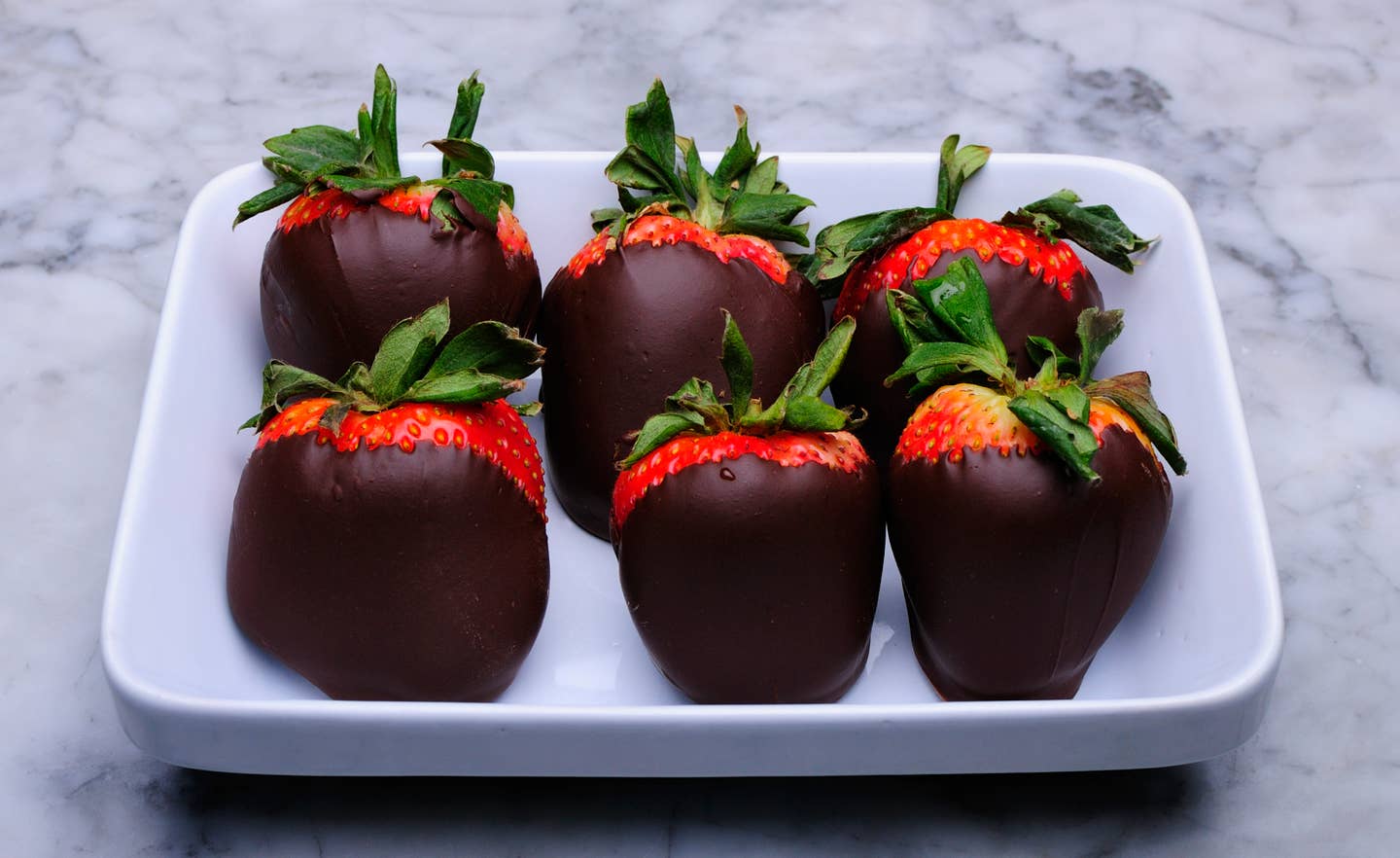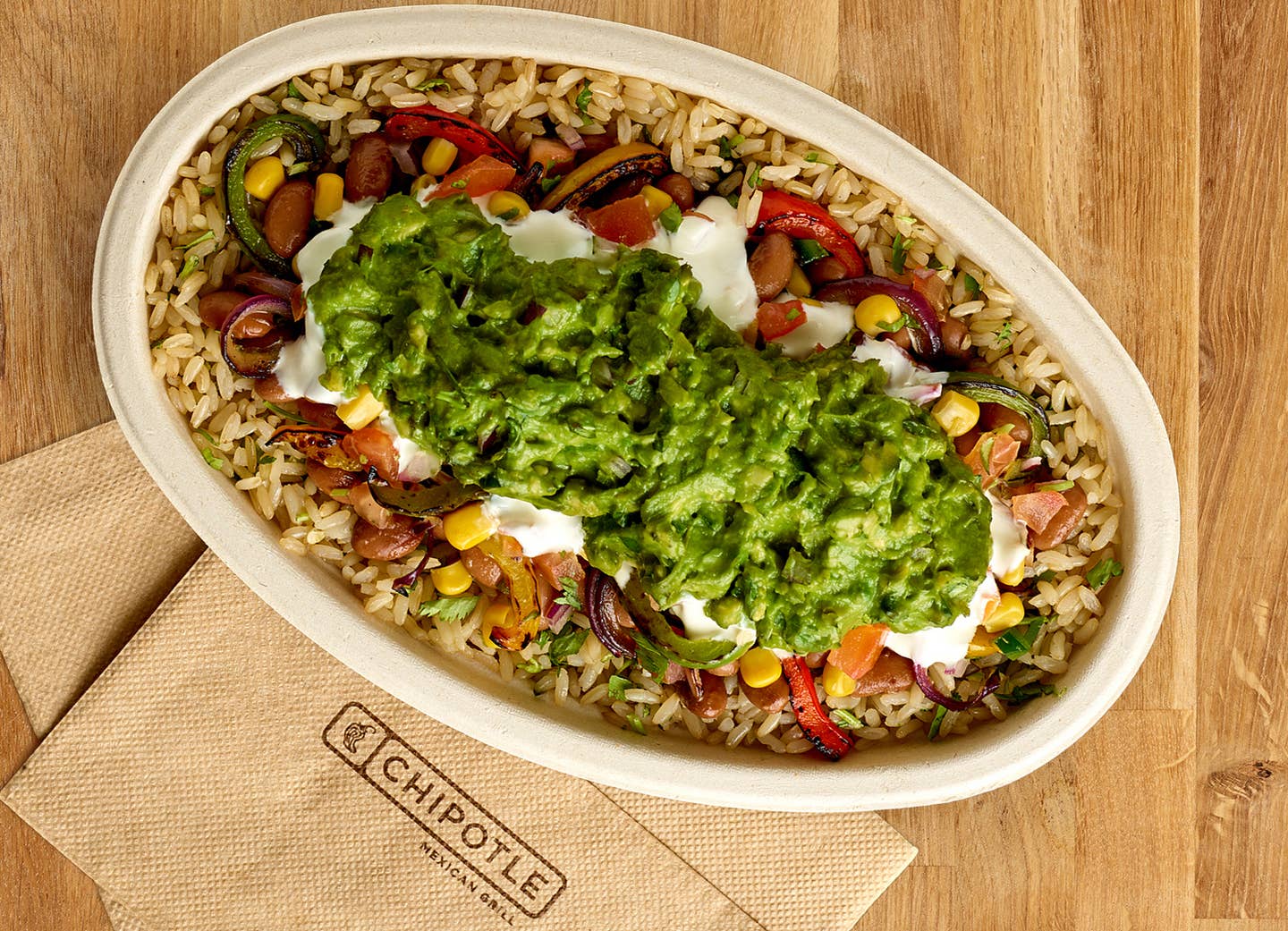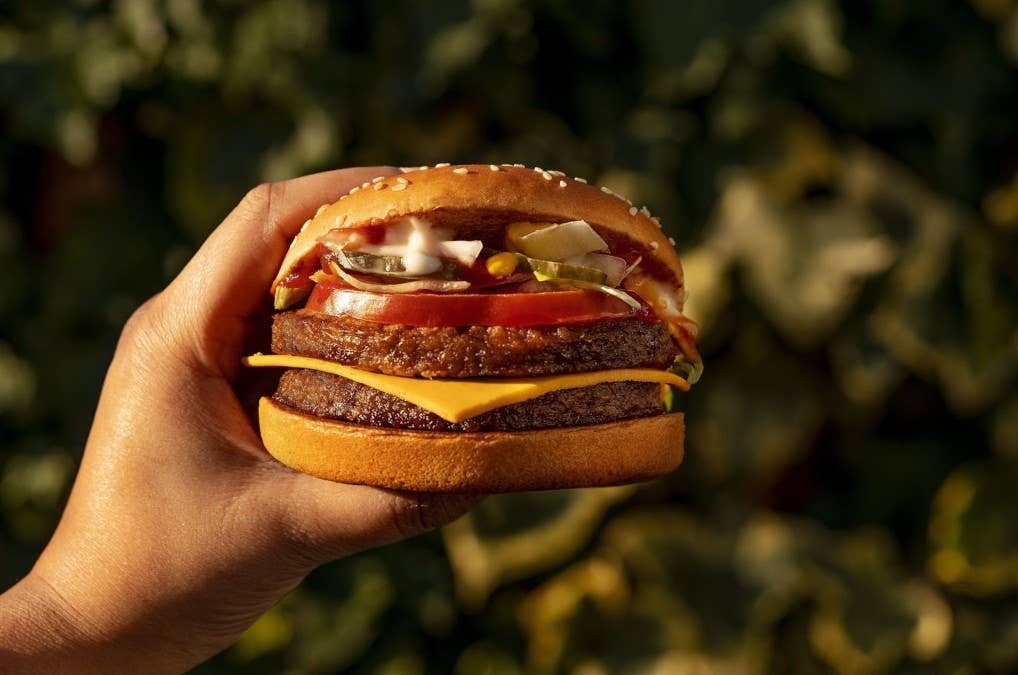
The 5 Best Plant-Based Foods to Eat When Anxious, Says a Harvard Psychiatrist
Anxiety is on the rise as Americans are experiencing prolonged bouts of stress (and with good reason). Of course, if you’re experiencing chronic anxiety or depression, it’s best to check in with a psychiatrist or medical professional to get the help you need, experts always urge. But making lifestyle changes such as getting regular exercise and changing what you eat can help support your efforts to be mentally and physically healthy. The first step is revamping your diet to incorporate more stress-busting foods that allow you to be pro-active in taking better care of yourself.
Harvard Nutritional Psychiatrist, Dr. Uma Naidoo, MD knows a thing or two about food as medicine. As director of Nutritional and Lifestyle Psychiatry at Massachusetts General Hospital and author of This Is Your Brain on Food: An Indispensable Guide to the Surprising Foods that Fight Depression, Anxiety, PTSD, OCD, ADHD, and more, she’s long promoted the link between what we eat and how we feel. Not surprising, in the world of whole plant-based foods, there’s no shortage of options to nosh on to help relieve your anxiety.
“There are a wide variety of plant-based foods, especially those rich in magnesium, vitamins C, D, B1, and B6 that can help to ease anxiety. Adding these into a whole-food, vegan diet can help lower stress and anxiety, so why not try them out?”
1. Dark chocolate by itself or melt it and dip your favorite berries in it
“Dark chocolate is rich in cacao flavonoids which provide antioxidants to the brain and lower inflammation. A human study showed that dark chocolate appears to be an effective way to reduce perceived stress in females,” says Naidoo. The secret lies in the cacao bean, she explains. “Once cacao beans are harvested, they are fermented and then dried in the sun. Due to the fermentation, raw cacao is full of probiotics which are the good bacteria for your gut. The rich flavonoids in dark chocolate make them rich in antioxidants. These are great because they decrease inflammation in the body, a common cause of mental health issues,” she says.
As a bonus, chocolate is also rich in the so-called “love molecule,” phenethylamine, and the “happiness hormone,” serotonin. “These good mood hormones are only present in real chocolate. It's the candy bars [laden with sugar, artificial ingredients, and the like that] we need to stay away from,” Naidoo adds. Look for pure dark chocolate bars with at least 70% cocoa content. For more on the many health benefits of cacao, read our guide here.
2. Turmeric with a pinch of black pepper in your smoothie or rice bowl
“The active ingredient in turmeric, curcumin, decreases anxiety and changes the corresponding brain chemistry, protecting the hippocampus. Curcumin’s positive effect on anxiety has been confirmed by animal studies and three trials in humans,” comments Naidoo.
Not much of a cook? If you’re not regularly adding turmeric and black pepper to curries, stews, homemade soups, and more, Naidoo suggests adding a ¼-teaspoon with a pinch of black pepper to a tea, soup, or smoothie each day. “The piperine from black pepper activates the curcumin in turmeric making it much more bioavailable to the brain and body,” she explains.
3. Vitamin D-rich foods like mushrooms and fortified plant-based milks
This link between vitamin D and your mood is pretty amazing: “Studies have demonstrated that adults with depression and anxiety have lower blood levels of vitamin D. In 2019, a study tested 51 women with diabetes and vitamin D deficiency to see whether taking a vitamin D pill every two weeks would change their anxiety levels. After sixteen weeks, compared to people who took a placebo, people who took the vitamin D were significantly less anxious,” shares Naidoo. “In another study, when vitamin D was administered as part of a micronutrient intervention to more than 8,000 people who were depressed and anxious, keeping vitamin D levels high was protective against anxiety,” she continues. Naidoo’s favorite plant-based foods rich in vitamin D include mushrooms and dried (dehydrated) mushrooms and fortified soy milk, rice milk or nut milks are good options.
These days, all of us are spending a lot of time at home amid the coronavirus pandemic, but it’s still important to find safe ways to get some fresh air as roughly 80% of our vitamin D comes from exposing our skin to direct sunlight, says Naidoo—and sunshine coming in through our windows isn’t a substitute for getting outside since glass absorbs the ultraviolet rays your body needs to convert into vitamin D.
4. Fiber-rich foods like broccoli and Brussels sprouts
In addition to keeping digestion running smoothly and keeping you fuller for longer (which can help curb overeating), fiber-rich foods prove a welcome partner in a holistic approach to fighting anxiety. “In 2018, researchers found that diets rich in dietary fiber may reduce the risk of depression, anxiety, and stress. Dietary fiber is a broad category of food ingredients that are nondigestible by our natural gut enzymes. However, though our guts themselves can’t break down fiber, different types of gut bacteria can. When dietary fiber can be broken down by bacteria, we call this being ‘fermentable,’” explains Naidoo, adding that this form of fiber encourages the proliferation of “good” bacteria in your gut.
“For example, when dietary fiber is broken down into certain smaller sugar molecules, the ‘good’ bacteria Bifidobacterium and Lactobacillus increase, which has a positive effect on mood by activating brain pathways and nerve signaling that can alleviate anxiety,” she says. It’s also interesting to note that along with decreasing inflammation in your body, dietary fiber also does so in your brain. “There is considerable evidence that brain (and body) inflammation is elevated in patients with anxiety,” she continues, citing a 2016 research study that found that people with anxiety disorders have elevated levels of certain markers that signify inflammation.
The good news is, what you eat can help play a role in reducing inflammation. “Inflammation in the brain has been shown to affect areas that are linked to anxiety (for example, the amygdala), and dietary fiber can help by calming down the brain’s and body’s inflammatory responses,” says Naidoo.
Plant-based whole foods are naturally rich in fiber. Some excellent options for boosting your fiber intake that Naidoo recommends include pears, apples, bananas, broccoli, Brussels sprouts, carrots, artichokes, almonds, walnuts, amaranth, oats, buckwheat, and pearl barley.
5. Fermented foods. Pass the kombucha
Feel calmer after a bottle of kombucha? Well, science may help explain that phenomenon.
“Fermented foods’ active cultures like kimchi, kombucha, sauerkraut, and miso are a great source of live bacteria that can enhance healthy gut function and decrease anxiety,” says Naidoo.
For your noggin, specifically, fermented foods may provide a variety of benefits. “In 2015, a study questioned 710 people about their fermented-food consumption, social anxiety, and neurotic traits. It found that eating fermented food frequently correlated with having fewer symptoms of social anxiety in neurotic patients. Taken together with previous studies, the results suggest that fermented foods that contain probiotics may have a protective effect against social anxiety symptoms for those at higher genetic risk,” offers Naidoo.
Beyond the options mentioned above, eating pickled and fermented vegetables are another way to incorporate these foods into your daily diet.
Top 10 Sources of Plant-Based Protein According to a Nutritionist
1. Seitan
Protein: 21 grams in ⅓ cup (1 ounce) Seitan isn’t as popular as other proteins, but it should be! Made from wheat gluten, its texture resembles ground meat. It’s often used in pre-made veggie burgers or meatless nuggets. Seitan has a savory taste, like mushrooms or chicken, so it works well in dishes that call for an umami flavor. With a hearty texture, seitan can be the star of practically any vegan main dish. Add it to stir-fries, sandwiches, burritos, burgers, or stews. Like tofu, seitan will take on the flavor of any marinade or sauce.
2. Tempeh
Protein: 16 grams in 3 ounces If you like a protein with a bit of bite, add tempeh to your list. Made from fermented soybeans, tempeh has a slightly nutty flavor and is pressed into a block. Most varieties include some sort of grains, such as barley or millet. Not only is tempeh a plant-based source of protein, but the fermentation process also creates good-for-your-gut probiotics. You can cut tempeh right off the block and use it as the base for a sandwich or pan-fry it with some sauce. Or, crumble, heat, and make it the star of your next taco night.
3. Lentils
Protein: 13 grams in ½ cup cooked Lentils come in multiple varieties--red, yellow, green, brown, black. Regardless of the type lentils are small but mighty nutritional powerhouses. They pack a good amount of protein as well as iron, folate, and fiber. When cooked, brown lentils retain their texture and can be the base for a grain bowl or make a hearty substitute for ground meat in meatballs, lasagna, tacos or Bolognese. Red lentils are a bit softer and make a nice add-in for a hearty soup, chili, or stew.
4. Hemp Seeds
Protein: 10 grams in 3 tablespoons Hemp seeds are a tender and nutty seed, derived from the hemp plant. They contain good amounts of omega-3s, iron, folate, magnesium, phosphorus, and manganese. They are also a solid source of both soluble and insoluble fiber, which helps to keep your digestive tract healthy and humming. Because they pack a double whammy of protein and healthy fats, hemp seeds can help satisfy hunger, preventing those embarrassing stomach growls as you slog your way to your lunch break. Add them to your morning smoothie or sprinkle them on top of yogurt, oatmeal, or even a salad.
5. Tofu
Protein: 9 grams in 3 ounces (⅕ of a block) Made from coagulated soybeans, tofu is the most popular plant-based protein. Soy is one of the only meatless "complete" proteins, meaning that it contains all of the essential amino acids that the body can’t make but needs for muscle and immune function. With 15% of your daily calcium needs, tofu is also a good replacement for dairy.
6. Edamame
Protein: 9 grams of protein in ½ cup This sushi appetizer is a nutrient powerhouse, so eat it anytime. Edamame is really just another name for soybeans in their pods. Let’s list off some stats--a small ½-cup serving of edamame has 9 grams of protein, 15% of your daily vitamin C, 10% of your daily iron and 16% of your daily fiber. Keep a bag of edamame in your freezer to serve as a fun-to-eat side dish or opt for the shelled variety to toss into salads or a grain bowl.
7. Quinoa
Protein: 8 grams per cup (cooked) Quinoa is an ancient grain and since it's gluten-free a great choice for anyone avoiding gluten. Add it to your burger recipe to create filling texture, or instead of meat in your taco or burrito. Quinoa is among the healthiest foods on the planet, delivering phytonutrients that have anti-inflammatory qualities, so keep it in your pantry for any meal that needs a filling grain. Just remember to soak it and rinse before cooking to get rid of any bitter taste.
8. Black Beans
Protein: 7 grams in ½ cup (canned) Eating beans on the regular might as well be a prerequisite for a plant-based diet. Not only are canned black beans inexpensive, but they also contribute 10% of your daily iron and 25% of your daily fiber to your diet. For less than $1 a can, beans can be the star of tacos, quesadillas, salads, soups, burgers, or dips.
9. Amaranth
Protein: 6 grams in ⅔ cup (cooked) Chances are you’ve never cooked amaranth. But you should, since this tiny, gluten- free grain is packed with almost 30% of your daily fiber and 20% of your daily iron. Cook it like a traditional grain to yield a soft, porridge-like texture. Many people add amaranth to other a hot breakfast cereal mixture, like oats and quinoa. It also pops like popcorn. Toss it in a pot with some oil and wait for it to pop up into a nutritious snack.
10. Peas
Protein: 5 grams in ⅔ cup If peas were one of your most hated veggies as a kid, it’s time to give them another chance. These green beans are a great low-calorie protein to keep in your freezer. Sure, they don’t always taste great when steamed or microwaved (who wants to eat mushy, overcooked peas?), but they do blend well into a yummy puree that can be slathered on toast. To amp up the flavor, add some lemon juice or mint to your mix before you blend.
The Top 20 Veggies with the Most Protein
1. Soy Beans
Soybeans are a legume but they are such a great source of protein that we had to lead the veggie list with it. There is more protein in just one ounce of soybeans than a cup of sliced avocado! 1 cup equals Protein - 28.6g Calories - 298 Carbs - 17.1g Fiber - 10.3g Calcium - 175mg
2. Peas
If the pod, that peas are grown in, is split down the middle, that is an indicator they are ripe. Seeds inside the pod vary and can be green, white or yellow. 1 cup equals Protein - 8.6g Calories - 134 Carbs - 25g Fiber - 8.8g Calcium - 43.2 mg
3. Corn
Fresh corn is a great source of energy for those who like to stay active. Protein isn't all that corn has to offer. Corn provides the body with potassium and B vitamins. 1 cup equals Protein - 5.4g Calories - 177 Carbs - 123g Fiber - 4.6g Calcium - 4.9mg
4. Artichoke Hearts
Artichokes are part of the sunflower family. The fiber in artichoke hearts is great for supporting digestion. 1 cup equals Protein - 4.8g Calories - 89 Carbs - 20g Fiber - 14.4g Calcium - 35.2mg
5. Asparagus
If not properly stored, Asparagus tends to go bad quickly, To elongate freshness, put damp paper towels around the stems, or place the entire asparagus bunch in a cup of water (like flowers) to maintain freshness longer. 1 cup equals Protein - 4.4g Calories - 39.6 Carbs - 7.4g Fiber - 3.6g Calcium - 41.4mg
6. Brussel Sprouts
Brussel sprouts have more Vitamin C than an orange. If your Brussel sprouts have a rancid odor that is an indicator you overcooked them. The smell occurs because the sprouts are composed of a great amount of sulforaphane. 1 cup equals Protein - 4g Calories - 56.2 Carbs - 40g Fiber - 4g Calcium - 56.2mg
7. Broccoli
If you are trying to lose weight broccoli is a great addition to your diet because it consists of 90 water and is also high in fiber. 1 cup (chopped) equals Protein - 3.8g Calories - 54.6Carbs - 11.2g Fiber - 5.2g Calcium - 62.4mg
8. Mustard Greens
Mustard greens provide the body with tons of Vitamin A, Vitamin C, Vitamin K and fiber. Adding steamed mustard greens into your diet has been known to lower cholesterol and reduce inflammation. 1 cup equals Protein - 3.2 g Calories - 21 Carbs - 2.9g Fiber - 2.8g Calcium - 104mg
9. Avocado
Avocado is commonly mistaken as a vegetable but it is technically a fruit. This fruit had to be included in our veggie list because it isn't just tasty but super nutritious. Avocados are packed with protein but they are a great source of potassium and fiber. Avocados are a great addition to any salad, sandwich and even smoothie! 1 cup equals Protein - 3.0 g Calories - 240 Carbs - 12.8 g Fiber - 10.1g Calcium - 18 mg
Onions are an unappreciated food hero since they provide 20 percent of your daily Vitamin C and deliver an abundance of antioxidants that can reduce inflammation. 1 cup (chopped) equals Protein - 2.9g Calories - 92.4 Carbs - 21.3g Fiber - 2.9g Calcium - 46.2mg
11. Beets
The entire beetroot is edible including the leaves which contain loads of vitamin A, calcium, iron and potassium. Beetroot is high in sugar but is considered one of the most nutritious veggies used in salads and soups. 1 cup equals Protein - 2.8 g Calories - 74.8 Carbs - 17g Fiber - 3.4g Calcium - 27.2mg
12. Oyster Mushrooms
Oyster mushrooms are commonly seen in Chinese dishes. They grow best in a controlled environment indoors. Oyster mushrooms have so many nutrients to offer besides protein such as iron, calcium, zinc and folic acid. 1 cup (raw and sliced) equals Protein - 2.8g Calories - 37 Carbs - 5.6g Fiber - 2.0g Calcium - 2.6mg
13. Bok Choy
Bok Choy is a member of the mustard family. One of the oldest cultivated vegetables in the world, Bok Choy means "white vegetable” and is a great source of vitamins A, C, B6, K, and E, magnesium, potassium, iron, manganese, and calcium. 1 cup equals Protein - 2.7 g Calories - 20.4 Carbs - 3.1g Fiber - 1.7g Calcium - 158mg
14. Green Beans
Green beans are a great source of vitamins B, C and K, and minerals such as magnesium, iron and manganese. Green beans should be cooked before eating, to destroy lectins. China is the biggest grower of green beans in the world, exporting over 15 million tons a year. 1 cup equals Protein - 1.8 g Calories - 31 Carbs - 7 g Fiber - 2.7 g Calcium - 37 mg
15. Cauliflower
The most nutritious way to consume cauliflower is steamed. Don't get intimidated by orange, purple or green cauliflower. All three types have the same benefits as white cauliflower. 1 cup equals Protein - 2.2g Calories - 28.6 Carbs - 5.4g Fiber - 2.8g Calcium - 19.8mg
16. Turnip
You can eat the entire plant, root and leaves. The turnip root is high in vitamin C and the greens are high in vitamins A, C, E, B6 and K, believed to counter inflammation. Add turnip roots to soup, or mash them. Add them to salads. 1 cup equals Protein - 1.6g Calories - 28.8 Carbs - 6.3g Fiber - 5.0g Calcium - 197mg
17. Alfalfa Sprouts
Alfalfa sprouts might be little but they sure are powerful. Plus they're quick and easy to grow. They are loaded with Vitamin C, Vitamin K, Iron and more. But because they have been known to carry bacteria, make sure to fully cook alfalfa sprouts if you have a fragile immune system or are pregnant. 1 cup equals Protein - 1.3 g Calories - 8 Carbs - 0.7 g Fiber - 0.6 g Calcium - 10.6 mg
18. Tomatoes
Keep your tomatoes fresher for longer by storing them stem down. When exposed to sunlight the Vitamin C in a tomato will diminish. 1 cup equals Protein - 1.3g Calories - 26.8 Carbs - 5.8g Fiber - 1.8g Calcium - 14.9mg
19. Zucchini
Zucchini has an abundance of potassium, even more than a banana! The reason zucchini isn't high in calories is that it is made up of 95% water. 1 cup equals Protein - 1.2g Calories - 28.8 Carbs - 7.1g Fiber - 2.5g Calcium - 23.4 mg
20. Spinach
Spinach is filled with Vitamin A, Vitamin E, Vitamin K, fiber and protein. The best part about spinach is you can sauté it, blend it or eat it raw! Spinach is best grown in rainy and cool weather. 1 cup equals Protein - 0.9g Calories - 6.4 Carbs - 1.0 g Fiber - 0.6g Calcium - 27.7 mg
More From The Beet






